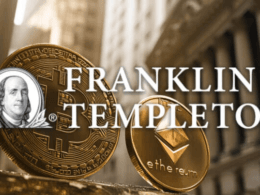Table of Contents Show
MakersPlace Bids Farewell to the NFT Space
In a significant blow to the NFT ecosystem, MakersPlace, a pioneering platform for digital art and collectibles, has announced its closure. The decision follows a sharp 19% decline in the NFT market and persistent funding challenges.
This blog unpacks the reasons behind MakersPlace’s shutdown, its impact on artists and collectors, and the broader implications for the NFT industry.
Why MakersPlace Closed Its Doors
MakersPlace’s closure is a symptom of a broader downturn in the NFT market. Despite its early success and high-profile collaborations, the platform struggled to sustain operations amidst declining sales and investor hesitation.
Key Reasons for the Shutdown:
- NFT Market Decline: The NFT sector has seen a 19% drop in sales volume, impacting the revenue streams of platforms like MakersPlace.
- Funding Challenges: Difficulty in securing additional funding left the platform unable to scale or adapt to market shifts.
- Increased Competition: New and established NFT platforms crowded the market, intensifying the struggle for user acquisition.
The Impact on Creators and Collectors
For Creators:
- Loss of a Platform: Many artists relied on MakersPlace for exposure and sales, leaving them searching for alternatives.
- Reduced Earnings: Lower NFT sales have already impacted artists’ revenue streams, exacerbating financial challenges.
For Collectors:
- Uncertainty About Digital Assets: The closure raises questions about the long-term value and accessibility of NFTs purchased on the platform.
- Limited Marketplaces: Fewer platforms mean reduced liquidity and trading opportunities for collectors.
What Does This Mean for the NFT Industry?
The MakersPlace shutdown highlights key vulnerabilities in the NFT market.
Broader Challenges:
- Market Saturation: An oversupply of NFTs and platforms has diluted the market.
- Speculative Nature: Many NFTs lack inherent value, causing volatility and investor hesitation.
- Funding Drought: Bearish market conditions have made it difficult for NFT startups to attract investors.
Potential Silver Linings:
- Industry Consolidation: A reduced number of platforms could lead to higher quality offerings and better user experiences.
- Focus on Utility: Platforms may pivot toward NFTs with real-world applications to sustain interest and growth.
How Can the NFT Industry Recover?
For the NFT market to rebound, stakeholders need to address core challenges and adapt to evolving consumer demands.
Strategies for Recovery:
- Innovative Use Cases: Expand NFT applications beyond art and collectibles, such as gaming, real estate, and intellectual property.
- Enhanced User Education: Simplify NFT creation and ownership to attract new participants.
- Regulatory Clarity: Clearer guidelines can build trust and encourage institutional participation.
Conclusion: A Wake-Up Call for the NFT Ecosystem
MakersPlace’s closure is a stark reminder of the challenges facing the NFT industry in a bearish market. While the loss of a pioneering platform is significant, it also presents an opportunity for the industry to reassess and innovate.
As the market evolves, the focus must shift toward sustainable growth, real-world utility, and fostering trust among creators, collectors, and investors.
Stay Updated With the Latest Crypto News
👉 Connect with us on LinkedIn
👉 Follow us on Instagram
👉 Follow us on Twitter
👉 Subscribe to Our Newsletter for the latest crypto news and market insights.
Disclaimer
The information provided is for informational purposes only and not financial advice. Always research before investing. See our Terms & Conditions.










